Melamine
N-TV published an impressive study in December 2019. In 2018, around 1/4 million of the necessary food inspections were not carried out due to a lack of staff. Berlin and Bremen were particularly affected. This was the result of an investigation and survey of around 400 competent authorities. We have created the video above to draw attention to the dangers of using melamine, bamboo and wood.

Why is melamine so "in"?
Melamine tableware has become very popular in our society in recent years. Initially encouraged by the requirements of bathing regulations, which prohibited the use of porcelain and glass in wet areas such as swimming pools, spas and saunas, melamine tableware has thus gained entry into the hotel and catering landscape through the back door, so to speak. Businesses with cramped kitchens, catering and out-of-home settings appreciated the lightness and resistance to breakage of melamine, and it replaced porcelain tableware in many areas. Melamine is particularly practical in the catering trade with its high volume business. It is cheaper than porcelain, doesn't break as quickly and is available in many bright colours, shapes and designs.
Is melamine advertising honest?
No.
For the layman, food presentation on melamine is just as attractive as on porcelain, but hardly anyone knows the risks of melamine. Especially not the particular risks in the catering industry! A comparison of the current use (as of 12/2019) of melamine crockery with a cigarette advert from the 1960s expresses in an understandable way how advertising is deliberately misused. "Smoke a fresh cigarette..." recommends the nice doctor from the USA. The use of melamine in food is as wrong as this advert.

For example, a "German" manufacturer of melamine advertises that its products are free from bisphenol-A and other harmful plasticisers. Melamine tableware does not contain any plasticisers, otherwise the melamine plate would bend under the weight of a sausage. Advertising such as this or statements such as "...food stays warm longer on melamine..." or "...melamine requires less energy to wash..." are gross nonsense!
Is melamine a natural raw material?
No.
Melamine is a colourless, odourless and tasteless chemical substance which, when combined with formaldehyde, produces the synthetic resin "melamine resin". This synthetic resin, usually processed into granules, forms the base material for 99.9% of all melamine tableware. The quality of such tableware depends on other additives used in melamine production. We recognise that "non-toxic" melamine is also produced in Germany (BASF), other European countries (OCI Orascom Construction Industries) or in the USA, which could be used in the manufacture of melamine tableware - but unfortunately we do not know of anyone who advertises or can advertise with formaldehyde-free melamine.
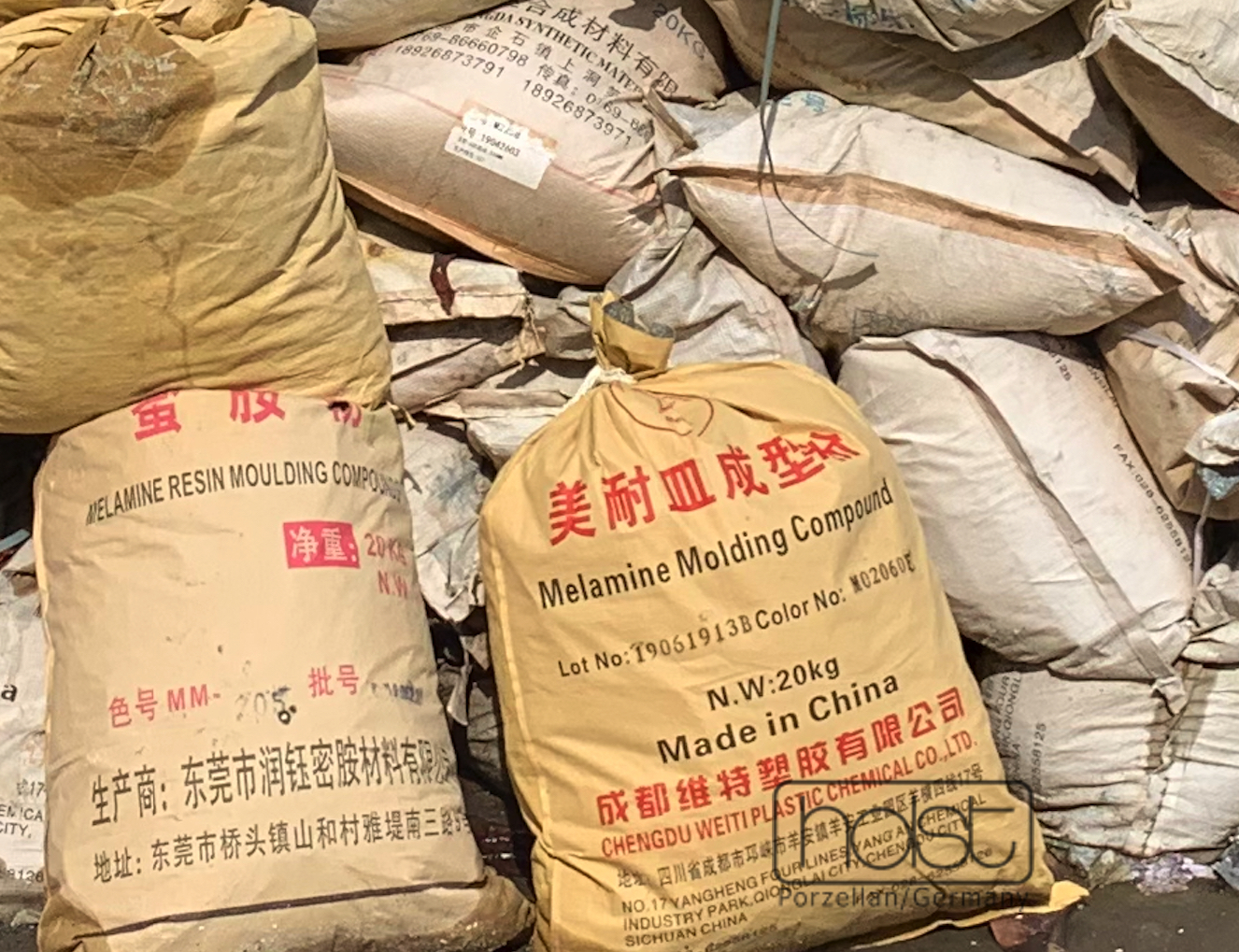
Plastic is called plastic because it is man-made. Describing plastic as "environmentally friendly" because it is a renewable raw material is a contradiction in terms.
Is melamine environmentally friendly?
No.
Melamine belongs to the large group of plastic tableware and is made from plastic. One of the biggest global environmental problems on earth is the pollution of the world's oceans with plastic waste and microplastics.
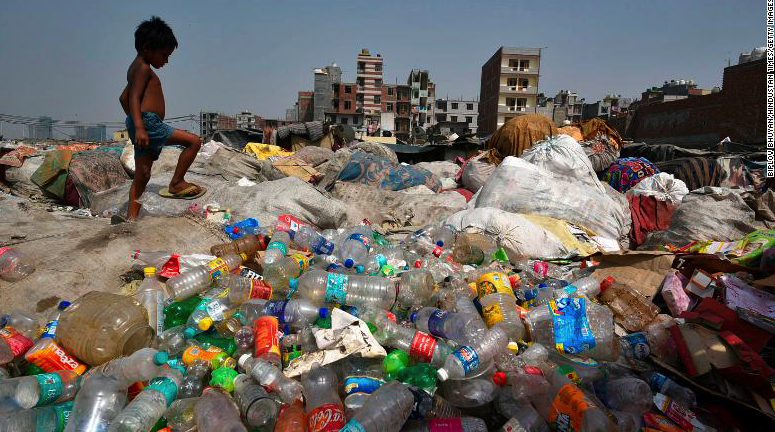
Due to its durable properties, melamine plastic is not biodegradable and is difficult to recycle. Normally, pure plastic is shredded in the recycling process and then remoulded using heat. Melamine plastic can be shredded, but cannot be remoulded with heat. (Source: Utopia Verlag, Munich).
Does melamine tableware contain formaldehyde?
Yes.
All of the manufacturers of melamine tableware that we analysed used melamine granulate, which contains formaldehyde as a binding agent. However, 100% of the manufacturers assured us that the legal limit value of 0.5 mg/qdm according to the LFGB was not exceeded. However, none of the manufacturers analysed had suitable testing methods to ensure compliance with the limit values themselves.

According to a publication by the state of Baden-Württemberg (see image above) from 2018, all melamine kitchen utensils tested exceeded the legal limits.
Is melamine crockery cut-resistant?
No!
Melamine is a relatively soft plastic whose surface can be damaged by even slight cutting pressure. And this is where a major problem with melamine begins. After being moulded and decorated, melamine tableware is coated with a special protective layer. This protective layer prevents formaldehyde, nonylphenol and other harmful substances from escaping from the pressed granulate base material. If this protective layer is damaged by a cut or a scratch with the edge of a spoon, the melamine crockery has already lost its suitability for use and must be disposed of immediately.
Is melamine crockery dishwasher safe?
No.
As already described in our product information under Dishes, the terms "dishwasher-safe" or "dishwasher-safe" are invalid. Instead, according to the DIN EN 1287-1 standard, dishwasher resistance must be indicated by the number of guaranteed wash cycles.
| Rinse cycles per day | Service life |
| 5 | 0,6 Years |
| 10 | 0,3 Years |
Highly acidic detergents, which are mainly used in the catering industry, also attack the melamine glazes and quickly lead to surface corrosion. The so-called matt glazes are around 30% more sensitive than the glossy ones. If the detergent dosing systems are not set correctly or are even set too high - which is unfortunately the case with many dishwashing systems - the level of corrosion is reached even more quickly.
Another problem in connection with dishwasher suitability is temperature resistance. If melamine is heated above 70 °C, a thermal decomposition process begins. The manufacturers we analysed specified values between 80 °C and 100 °C as the maximum load limit.

According to the Working Group for Commercial Dishwashing, the temperature in the fresh water rinse cycle is between 80 °C and 85 °C. The question arises as to how melamine crockery can be described as "dishwasher-safe" if the rinsing process is up to 15 °C above the recommended maximum temperature.
What the trade association says about dishwashing
Plastics that cannot be moulded by heat (thermosets) are dishwasher-safe. Plastics that can be moulded by heat (thermoplastics) are only dishwasher-safe to a limited extent (observe manufacturer's instructions).
Plastics only have a low heat storage capacity. This has an unfavourable effect on drying. Drying processes specially developed by the appliance industry increase the degree of drying for plastic dishes. The detergent industry also offers specially formulated rinse aids. Depending on the quality, the smooth surface can lose its lustre over time. It becomes porous on its surface and can therefore absorb colour pigments from food (e.g. tomato sauce etc.) that are not water-soluble. This results in permanent discolouration. Odours can also accumulate in this way.
Source:
HEA - Fachgemeinschaft für effiziente Energieanwendung e.V.
Reinhardtstraße 32
10117 Berlin
Is melamine crockery microwave-safe?
No!
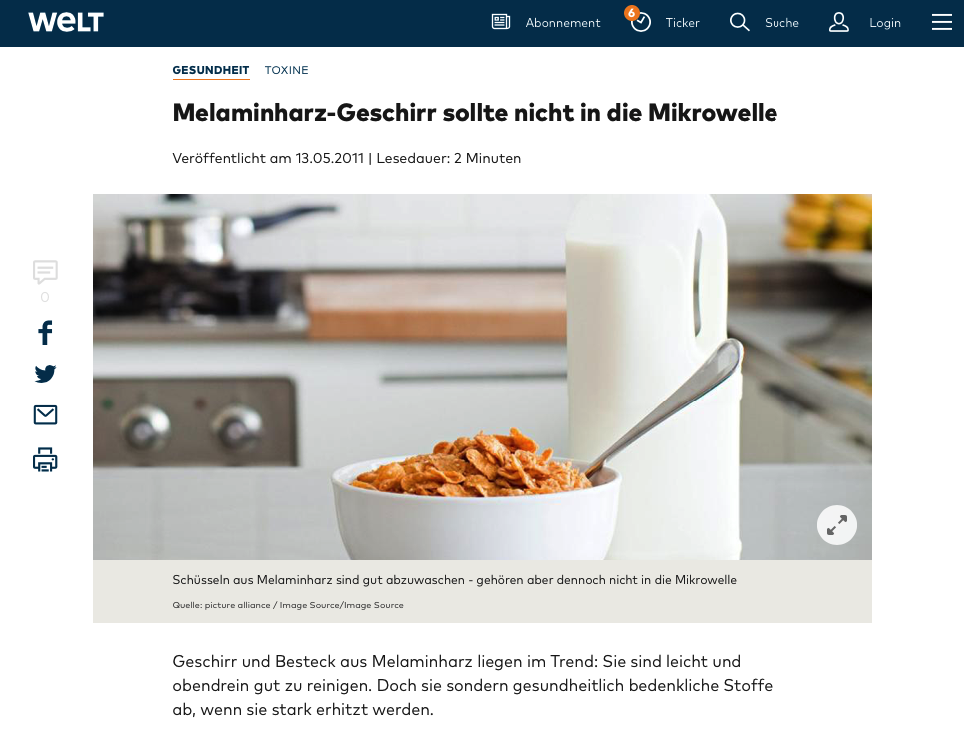
Just a few seconds in the microwave heats the molecules of the melamine crockery and toxins are released. Once in the microwave, the melamine crockery must be disposed of immediately. Under no circumstances should it be used again afterwards.
Is melamine crockery ovenproof?
No!
If melamine is heated above 70 °C, a thermal decomposition process begins. The toxins in the melamine granulate are softened, so to speak, and then begin to settle on the food as a toxic mist.
Is melamine crockery even suitable for hot dishes?
No!
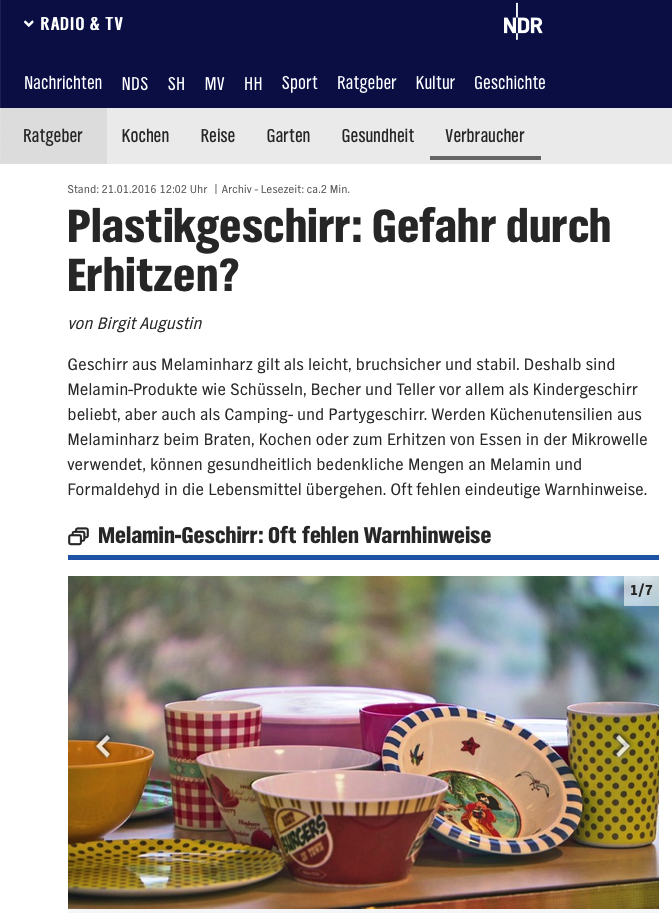
According to the Hygiene Guideline of the Federal Ministry of Health BMG-75210/0003-II/B/13/2013 of 29 January 2013, food in commercial kitchens and similar facilities must be kept hot at a minimum temperature of 70 °C in accordance with HACCP. Many thermoports, banquet trolleys, hot trolleys and other appliances for keeping food hot exceed this minimum temperature. It can be stated that, according to HACCP, the filling temperature of food and drinks in melamine crockery can in many cases be above the maximum temperature of 70 °C.
Is melamine crockery freezer-proof?
No!
Melamine tableware may only be placed in a normal refrigerator that cools between +7 °C and +2 °C. According to the manufacturer, melamine must never be cooled below -10 °C.
A hidden problem with melamine tableware?
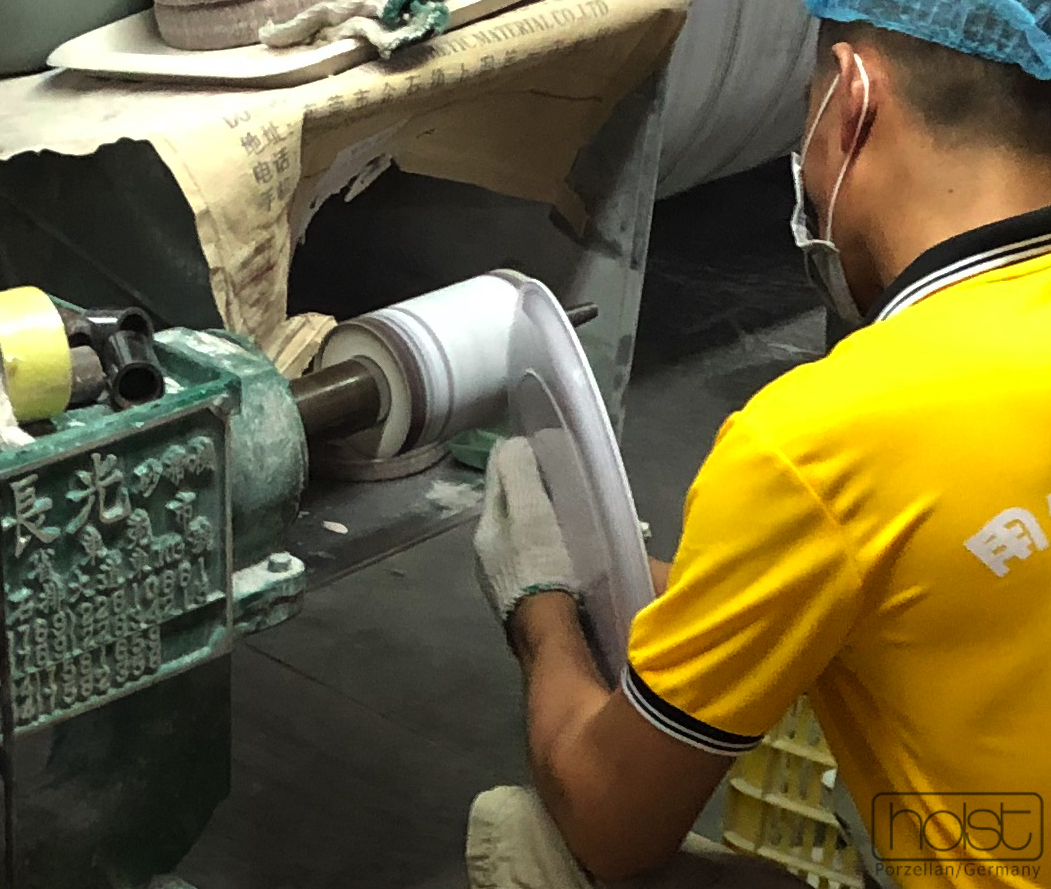
If melamine tableware is decorated, this is done after the melamine granulate has been pressed onto the already moulded body. After pressing on the decoration, which ultimately consists of a type of melamine paper, the edges protrude. These overhangs are simply cut off and polished. This means that the rims and edges of melamine crockery offer a completely unprotected point of contact with food and drinks.
Melamine - the manufacturers know better!

If melamine is so harmless to humans, nature and living creatures, why do all factories that produce or process it have the strictest safety regulations regarding the wearing of protective masks and special gloves? When we asked whether the health of long-serving employees in the melamine industry has changed significantly, we only received a smile. However, having experienced this first-hand, we can confirm that headaches and burning eyes set in after just a few visits to the factory.
Is melamine even suitable for commercial use?
No!
A responsible caterer would immediately confirm that the conditions for the risk-free use of melamine tableware do not exist in a commercial kitchen. The direct hazard potential alone
- The smallest scratches and cuts
- Open edges
- Rinse and rinse temperature
- Overheating
- Very short service life (flushing cycles)
requires daily inspection and assessment of every piece of melamine crockery if it is handled properly. And this in an age of staff shortages and temporary labour. No caterer can rule out the possibility of formaldehyde, nonylphenol or other harmful substances being transferred to their food and drinks from inconspicuous damage. In its statement no. 046/2019, the Federal Institute for Risk Assessment has declared melamine crockery to be a risk group.

Except for use in wet areas, there is a far better and completely risk-free alternative: porcelain! So there is no obvious reason to serve food on melamine dishes, except to save costs - at the expense of the guests.
Porcelain gives 100% prevention
(Copyright: n-tv 2019-11-11)
- 100% Food-safe
- 100% Antibacterial
- 100% Mould-free
- 100% Cut resistant
- 100% Easy and quick to clean
- 100% Dishwasher safe
- 100% Splinter-free
- 100% Ovenproof
- 100% Microwave safe
- 100% Feel good as a guest
- 100% Virtually unlimited service life
- 100% Innovation
- 100% Prevention
- 100% Gastronomic responsibility
Conscientious hosts give their guests peace of mind!
